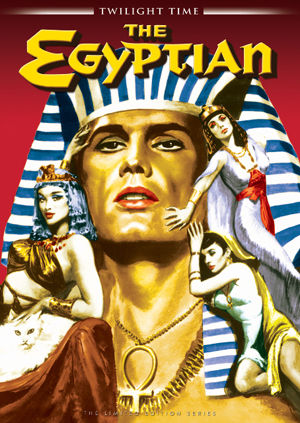Ancient Egypt is one of the most fascinating cultures in history because the Ancient Egyptian citizens were far ahead of their time. Since the beginning of the 20th century, when several discoveries of the time period were exhumed, filmmakers have been inspired by Ancient Egyptian life to the point where Egypt is now a mystical fantasy in movies produced by Hollywood. As a result, the fashion in Egyptian-related films has gone through an evolution over the past 100 years. Nevertheless, few have mastered the excitement of the civilization with historical precision of costume.
--->
The unknown costumer for Theda Bara’s Cleopatra was extravagant in her designs because they didn’t accurately reflect Egyptian fashion at all. It is apparent that the fashion in the film was influenced by the French high fashion of the 1910’s and the Pre-Art Deco era of heavily beaded clothing with dramatic accents. Furthermore, Bara wasn’t wearing a wig, which was one of the main staples of Egyptian fashion during ancient times. In Cleopatra, Bara's hair was smooth and in finger waves with multiple headdresses on top (one including a snake in the front). Moreover, her breasts were covered with conical bra-style tops that included numerous amounts of beads, but Egyptian women rarely covered their breasts with any clothing. The male actors that appeared in the film also wore costumes that were immensely beaded and exaggerated. The headdresses and shentis they were dressed in had more of an ostentatious feel than an Egyptian inspiration. Cleopatra of 1917 clearly portrayed an imaginative side of Egyptian dress, which was probably due to the fact that King Tutankhamun’s tomb wasn’t discovered until 1922. After 1922, replica Egyptian clothing became more precise in Cleopatra films as time went on.
Although a decade passed between Tutankhamun’s unearthing and the release of Cleopatra of 1934, the costumes in the film still weren’t on target, but improved a fair amount. For example, Claudette Colbert wore a black wig in the movie, but her hair was influenced more by the wavy curls of the 1930’s than the coarse horsehair worn by the women in Ancient Egypt. The costumes weren’t as beaded, or as extravagant, but the body-hugging silhouettes encompassed in the 30’s inspired the fabrics and materials the garments were made out of. In addition, the makeup was perceptibly a product of the makeup in the Golden Age of Hollywood because Cleopatra wasn’t wearing thick elongated eyeliner, but rather long false eyelashes, penciled-in eyebrows, and dark bee-sting lips. Even though the jewelry style became more accurate because Claudette Colbert wore large necklaces, bracelets, and rings, the style echoed the 1930’s because pearls and sapphires were the focus. This Cleopatra had her breasts constantly covered as well, and she was even more modest than Theda Bara’s Cleopatra. Finally, the men in the film were mostly in Ancient Roman costumes, with no trace of Egyptian headdresses or shentis.
Lastly, Cleopatra of 1963 became an even more defined depiction of fashion in Ancient Egypt. To start off with, the setting included sphinxes and hieroglyphs, which were a major component of Ancient Egyptian culture. But relating to fashion, this film was the most exact thus far. Egyptian makeup was evident because the eyeliner was bold and thick. Elizabeth Taylor wore a headdress of Lower Egypt and multiple black wigs as Cleopatra. Additionally, she carried a crook and flail, key accessories in Ancient Egypt. Jewelry was mainly gold and didn’t take much influence from the jewelry of the 1960’s. Furthermore, the film included various colors that were prominent in Egyptian culture. However, some of the clothing Cleopatra was dressed in represented the modesty of the 1960’s because the sleeves and hemlines were too long to imitate the clothing from Ancient Egypt. Yet, this was the first Cleopatra film to accurately illustrate Egyptian men’s fashion because the male actors were seen in thick collared necklaces, headdresses representing their locations in Egypt, and shentis.








No comments:
Post a Comment